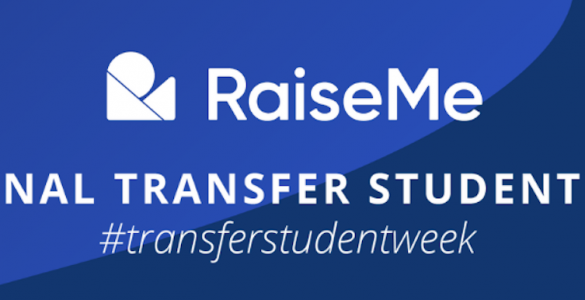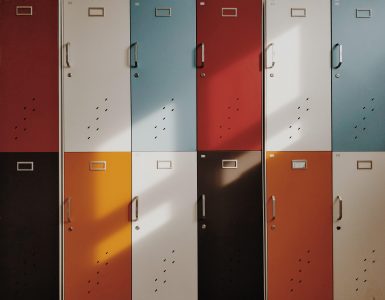Helping Students Map Support Networks In Times Of Crisis
This is the second in a series of posts aimed at providing resources for educators navigating the social and emotional needs of students during the COVID-19 pandemic.
If you spend more than a few days around RaiseMe, you’ll discover that several of us are pretty into science fiction. Some of us are Trekkies (me!) and some of us are more into Star Wars, or The Expanse, or all of the above. So right now, in the midst of the unprecedented national crisis that COVID-19 has created, it isn’t surprising that some of us have been thinking of renowned science fiction author Octavia Butler. For a few weeks we’ve been ruminating on her words: “All that you touch You Change, All that you Change, Changes you.”
We are in a period of unprecedented change. Parents, students, and educators alike are filled with questions — and with the fear that follows when questions are asked but uncertainty echoes back. We know life will change in some way after this crisis has abated, but we do not yet know how, to what extent, or for who it will change. Cliffhangers like these call for some emotional preparation and for identifying our support structures wherever possible.
In our article “Checking in With Yourself and Your Raisins,” we gave some tips and suggestions for keeping you and your network grounded during challenging times. Today, we want to dig a little deeper and share out what it might look like for you to practice building healthy boundaries and to identify what collective care looks like in your life. We hope once you’ve done this exercise for yourself, you can share it with your network and with parents and students too.
Pod Mapping and Pod Mapping Worksheet
Over the past several years the Bay Area Transformative Justice Collective (BATJC) has pioneered transformative justice responses to child abuse throughout northern California. One resource created by the collective has been its “pod mapping” exercise. And although BATJC’s pod mapping exercise was initially created to identify support structures for victims of abuse, as a framework for visualizing and naming our own community networks it is applicable to a wide variety of crisis situations — including COVID-19. Let’s try it.
 Photo Description: BATJC Pod Map
Photo Description: BATJC Pod Map
Instructions adapted from Bay Area Transformative Justice Collective:
1) Write a name in the middle grey circle. As a first attempt, this should be your name. But as you become familiar with the process you can also write your school or institution’s name (or the name of an issue your institution is navigating like food insecurity, online advising, or parent support) and start mapping your community resources.
2) The second ring of circles is your pod. Write the names of the people who are in your pod. BATJC encourages “people to write the names of actual individuals, instead of things such as “my church group” or “my neighbors”” because individuals are direct points of contact. If you are using the map as an institution or for mapping out support for an issue, be specific about naming supporting orgs. Consider adding points of contact for your referral networks.
3) The third ring of circles, those with dotted lines surrounding your pod, are people who BATJC calls “movable.” This means “they are people that could be moved into your pod but need a little more work.” For example, you may need to put some time and effort into building a more secure relationship with them. Interpersonally, this might look like a check-in schedule throughout a crisis. Institutionally, this might look like a memorandum of understanding.
4) Lastly, as an individual filling out a pod map, BATJC says “the larger circles at the edge of the page are for networks, communities or groups that could be resources for you.” This is where you might start filling in organizations you can lean on. For educators, this might look like a teachers’ support group. For students, it might look like a community-based organization. And for schools or institutions, it might look like outliers in your referral network.
That’s it! Now it’s your turn. If you cannot fill out the entire image, that’s okay too. This framework is meant to 1) Help ground you by identifying who you can lean on for support, 2) Help you or your organization identify holes in the support you want to be offering students and families, and 3) Provide a visual for what collective care and wrap-around services could look like for you and your institution once you know where to focus your efforts.
Revisiting Science Fiction
Since we are a team that likes to lean into science fiction, we thought we might leave you with one more quote before we go. We hope it lands close to heart:
“Oak trees don’t set an intention to listen to each other better, or agree to hold tight to each other when the next storm comes. Under the Earth, always, they reach for each other, they grow such that their roots are intertwined and create a system of strength which is as resilient on a sunny day as it is in a hurricane.”
— Adrienne Maree Brown
Right now, in the midst of so much change and uncertainty, we know some consistency is needed. So we’ll be back here again in a couple of weeks with another resource for you to explore. Until then, keep reaching out to each other.
You may also like

National Transfer Student Week 2020: Celebrate With RaiseMe!
Join RaiseMe in celebrating National Transfer Student Week October 19th-23rd. This is a week to celebrate our students, connect them with resources, and to...

Join RaiseMe’s Virtual Transfer Fairs: September 2020
During RaiseMe’s Virtual Transfer Fair, community college students can earn micro-scholarships for visiting with colleges, right from home. Students: we know it has...

RaiseMe: Everything Educators Need To Know for Back-to-School and More
A comprehensive overview for getting your high school students started with RaiseMe.
